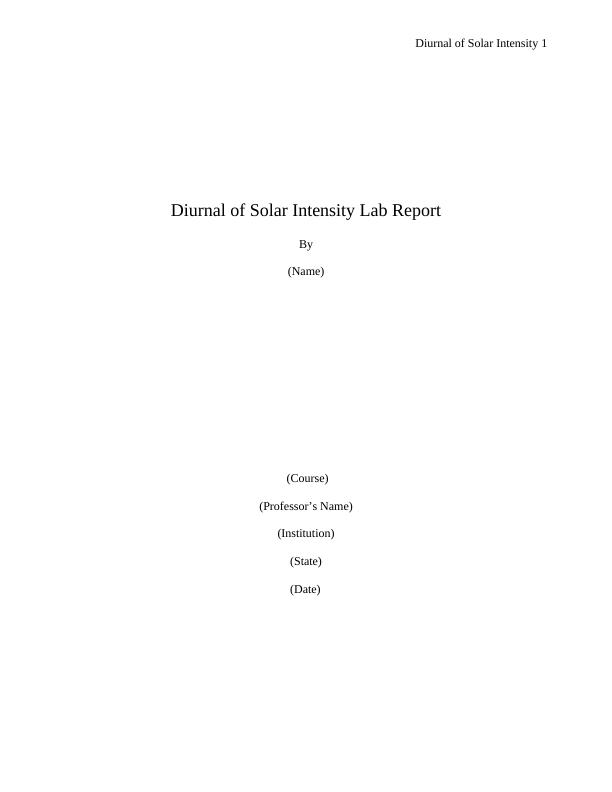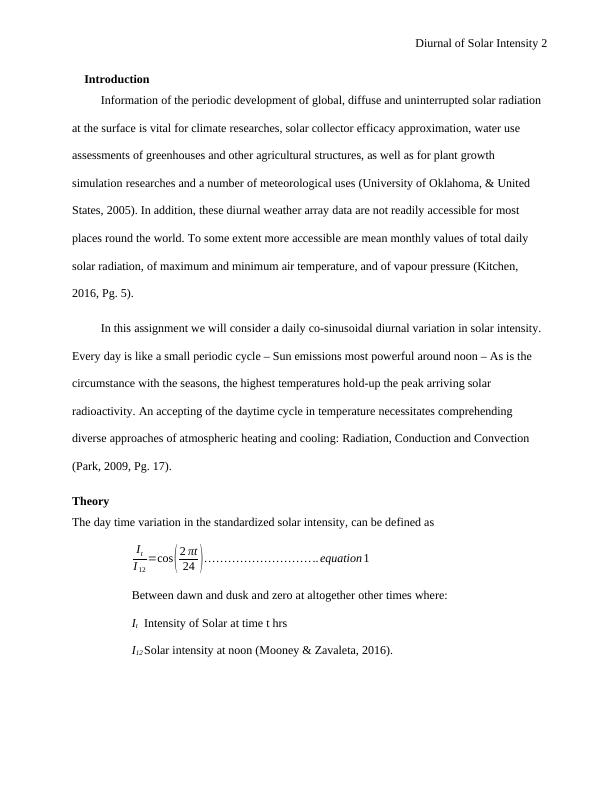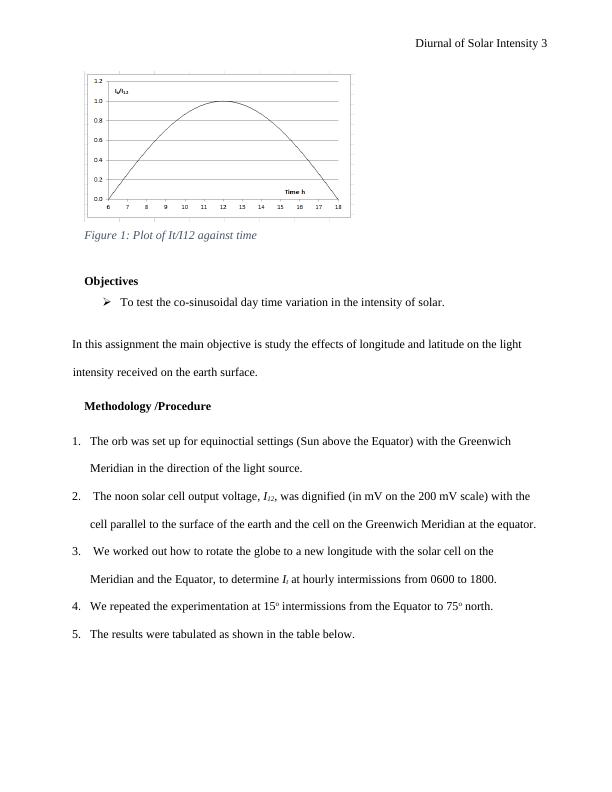Ask a question from expert
SOLAR RADIATION, HEAT BALANCE AND TEMPERATURE (PDF)
9 Pages1504 Words229 Views
Added on 2021-05-31
SOLAR RADIATION, HEAT BALANCE AND TEMPERATURE (PDF)
Added on 2021-05-31
BookmarkShareRelated Documents
Diurnal of Solar Intensity 1Diurnal of Solar Intensity Lab ReportBy(Name) (Course)(Professor’s Name)(Institution)(State) (Date)

Diurnal of Solar Intensity 2Introduction Information of the periodic development of global, diffuse and uninterrupted solar radiation at the surface is vital for climate researches, solar collector efficacy approximation, water use assessments of greenhouses and other agricultural structures, as well as for plant growth simulation researches and a number of meteorological uses (University of Oklahoma, & United States, 2005). In addition, these diurnal weather array data are not readily accessible for most places round the world. To some extent more accessible are mean monthly values of total daily solar radiation, of maximum and minimum air temperature, and of vapour pressure(Kitchen, 2016, Pg. 5).In this assignment we will consider a daily co-sinusoidal diurnal variation in solar intensity.Every day is like a small periodic cycle – Sun emissions most powerful around noon – As is the circumstance with the seasons, the highest temperatures hold-up the peak arriving solar radioactivity. An accepting of the daytime cycle in temperature necessitates comprehending diverse approaches of atmospheric heating and cooling: Radiation, Conduction and Convection (Park, 2009, Pg. 17).TheoryThe day time variation in the standardized solar intensity, can be defined asItI12=cos(2πt24).............................equation1Between dawn and dusk and zero at altogether other times where:ItIntensity of Solar at time t hrsI12Solar intensity at noon (Mooney & Zavaleta, 2016).

Diurnal of Solar Intensity 3Figure 1: Plot of It/I12 against timeObjectivesTo test the co-sinusoidal day time variation in the intensity of solar.In this assignment the main objective is study the effects of longitude and latitude on the light intensity received on the earth surface. Methodology /Procedure1.The orb was set up for equinoctial settings (Sun above the Equator) with the Greenwich Meridian in the direction of the light source.2. The noon solar cell output voltage, I12, was dignified (in mV on the 200 mV scale) with the cell parallel to the surface of the earth and the cell on the Greenwich Meridian at the equator.3. We worked out how to rotate the globe to a new longitude with the solar cell on the Meridian and the Equator, to determine It at hourly intermissions from 0600 to 1800.4.We repeated the experimentation at 15o intermissions from the Equator to 75o north.5.The results were tabulated as shown in the table below.

End of preview
Want to access all the pages? Upload your documents or become a member.